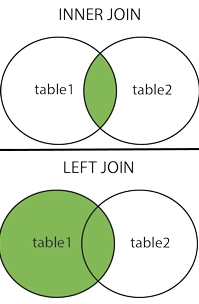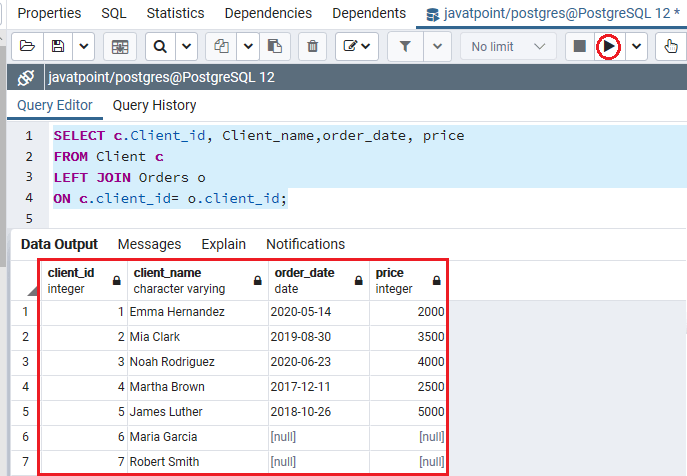


modifying the ON statement with AND clauses in between.We can add a lot of functionality to our join statements by doing several things:
#Postgresql left inner join full#


specify the order that you want the items in!.refer to each desired column by calling its table (object-like syntax).The best way to vizualize exactly how JOINs work is to see what would happen if we alter the SELECT statement to a * query: SELECT *Īs you can see, the statement INHERINTLY joins the rows with shared ID's, so all you have to do is: This query will return all of the matching items in the SELECT statement where ida and idb are present in BOTH tables. INNER JOIN ages_residencies_of_ga_students as arga We can take this JOIN apart a bit more in-depth than the rest to ensure it makes perfect sense: SELECT gsn.first, gsn.last, arga.age, arga.residency Gives the intersection of the two tables, or the rows they have common where Table A reference = Table B reference.Table B: ages_residencies_of_ga_students idb Here are two separate tables in our poorly structured database: I didn't get this at first either, but looking at a real example helped me understand exactly what the different statements mean.
#Postgresql left inner join how to#
SQL JOIN's are used to combine rows from 2+ tables based on a common field between them.īelow is an image that does an excellent job representing all of the different SQL joins and how to implement them ( credit to "Cool graphic, but what does all of this mean? I still don't get it!" Hopefully by the end of this wiki page, you should have a better understanding on what the above two statements mean and how to implement them in a single SQL query statement. We want to query for AND consolidate ALL the references some 'parent' table has to all its children: whether its through a foreign key table reference or through an 'xref' table of multiple item references.We want to query for consistencies between two separate tables that are connected through a reference key.Here are two scenarios where we need to add some intricacy to our SQL statement in order to perform a sufficient query: Unfortunately, sometimes the queries need an added level of complexity and a simple statement like the one above wont do the trick. SELECT * FROM movies WHERE rottentomatoes > 85 AND lead_actor like 'Kevin Spacey' The SQL SELECT statement allows us to search through a table and return a custom results table with whatever columns/groupings/operations we specified in our query. On the most basic level, the way we learned to query through a table in one of our databases is pretty simple.


 0 kommentar(er)
0 kommentar(er)
